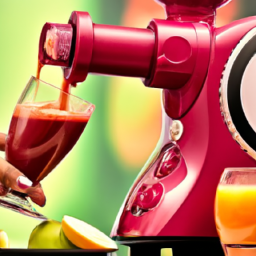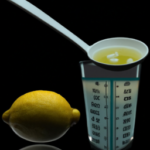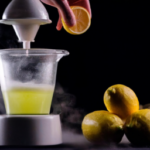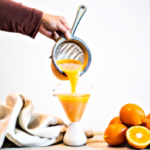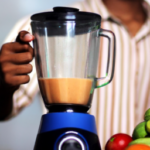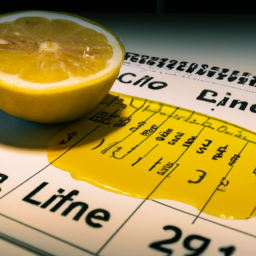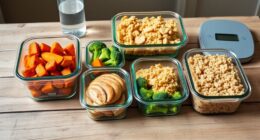When delving into the world of juice making, there are numerous options to choose from. You can buy pre-made juice from the store or go for the freshness of homemade juice. However, for those seeking a more robust and intensified version of their favorite juice, the answer lies in making your own concentrated juice. In this article, I will guide you through the process of creating your own concentrated juice from scratch.
First off, you need to choose your fruits and vegetables. The best fruits for making juice are those that are high in water content, such as oranges, lemons, and grapefruits. Vegetables like carrots, beets, and celery also make great additions to your juice.
Once you have chosen your produce, it’s time to wash and prepare them. This includes removing any stems, seeds, and peels, as well as cutting them into smaller pieces for easier juicing.
With the prep work done, let’s move on to juicing your produce.
Key Takeaways
- Choosing high water content fruits and vegetables and properly preparing them is essential for making concentrated juice.
- Different types of juicers are better suited for certain types of produce.
- Straining and filtering the juice is important to remove pulp or solids.
- Dilution ratios and adjusting sweetness and acidity levels are important for achieving the desired flavor.
Choose Your Fruits and Vegetables
Now it’s time to choose your fave fruits and veggies to create the perfect blend for your concentrated juice! When it comes to making concentrated juice, it’s important to choose the best fruits and vegetables.
Some of the best options include apples, berries, carrots, kale, and spinach. These ingredients are packed with nutrients, vitamins, and minerals that can help keep your body healthy and energized.
Before you start chopping and blending, it’s crucial to properly wash your produce. Even if your fruits and vegetables look clean on the outside, they may still contain harmful bacteria or pesticides.
To ensure that your juice is safe to consume, give your produce a thorough rinse under cold water. You can also use a vegetable brush to scrub away any dirt or debris. Once you’ve finished washing, pat your produce dry with a clean towel or let them air dry.
With your fruits and veggies properly washed and prepared, you’re ready to start creating your delicious and nutritious concentrated juice!
Wash and Prepare Your Produce
Now that I’ve chosen my fruits and vegetables, it’s time to wash and prepare them for juicing. One important step is to remove any seeds or pits, as they can add a bitter taste to the juice.
Another step is to peel the produce, especially if it has a tough outer layer, like an orange or cucumber. Lastly, I’ll need to chop the produce into smaller pieces to fit into the juicer chute.
Taking these steps will ensure a smooth and tasty juice.
Removing Seeds and Pits
First, grab a strainer and a spoon to remove the seeds and pits from your fruit, just like fishing out bones from a fish. Seedless options are available for some fruits like grapes, but for others like peaches and cherries, removing the seeds and pits is a necessary step in making concentrated juice.
Leaving the seeds and pits in may add flavor to the juice, but it can also make it bitter or gritty. The table below shows some common fruits and the best method for removing the seeds or pits. Once you have removed the unwanted parts, you can move on to the next step of peeling and chopping the fruit.
| Fruit | Method |
|---|---|
| Peaches | Cut around the pit with a knife and twist the halves apart |
| Cherries | Use a cherry pitter or cut around the pit with a knife |
| Apples | Cut around the core and discard it |
| Grapes | Use a seedless variety or cut in half and remove the seeds with a spoon |
Now that the seeds and pits are removed, it’s time to peel and chop the fruit.
Peeling and Chopping
To peel and chop your fruit, you’ll need a sharp knife and a cutting board. Begin by washing the fruit thoroughly to remove any dirt or residue.
Depending on the type of fruit, you may want to keep the peel on or remove it. For example, the peel of citrus fruits can add a bitter taste to the juice, so it’s best to remove it. However, the peel of apples and pears can add a subtle flavor to the juice, so it’s recommended to keep it on.
Once you’ve decided whether or not to keep the peel, use a sharp knife to chop the fruit into small pieces. Different cutting techniques can enhance the flavor of the juice. For example, cutting fruit into thin slices will result in a milder taste, while dicing the fruit into small cubes will give a stronger flavor.
The size of the fruit pieces will also affect the yield of juice. Generally, smaller pieces will produce more juice than larger ones.
With your fruit peeled and chopped, you’re ready to move on to the next step of making concentrated juice: juice your produce.
Juice Your Produce
Start by washing and cutting your produce into small pieces before placing them in a juicer. Juicing is a great way to consume a variety of fruits and vegetables in one go. The benefits of juicing include getting a concentrated dose of vitamins, minerals, and antioxidants that are easily absorbed by the body. It can also be a convenient and quick way to get your daily servings of fruits and vegetables, especially for those who don’t enjoy eating them whole.
When it comes to choosing the best juicers for different produce, there are a few things to consider. Centrifugal juicers are great for hard fruits and vegetables like apples and carrots, while masticating juicers are better for leafy greens and soft fruits like berries. Citrus juicers are perfect for juicing oranges, lemons, and other citrus fruits. It’s important to choose the right juicer for your produce to ensure the best possible yield and quality of juice.
To get the most out of your juicing experience, it’s important to strain and filter the juice. This will remove any pulp or solids that may affect the taste and texture of the juice.
Strain and Filter the Juice
Now that I’ve extracted the juice from my produce, the next step is to remove any remaining pulp and fiber. This helps to create a smoother, more concentrated juice.
To do this, I’ll be using either a cheesecloth or a fine mesh strainer. Both of these options are effective in catching any unwanted particles and ensuring a pure juice.
Removing Pulp and Fiber
First, strain the juice through a fine mesh sieve to remove any large pulp and fiber pieces. This step is crucial in achieving a smooth and consistent texture for concentrated juice. While consuming pulp has its benefits, such as providing extra fiber, some people prefer a pulp-free drink. There are alternative methods of removing fiber, such as using a juicer with a filtration system or a blender with a strainer attachment. However, straining through a fine mesh sieve and cheesecloth is the most effective way to remove unwanted pulp and fiber.
Once the juice has been strained through a fine mesh sieve, use a cheesecloth to strain it again for an even smoother consistency. A cheesecloth is a versatile kitchen tool that is perfect for this task as it can catch any remaining pulp and fiber. As a result, the concentrated juice will have a smooth texture that is perfect for mixing with water or other beverages. Using cheesecloth or a fine mesh strainer is an essential step in making concentrated juice, as it helps to remove unwanted pulp and fiber and achieve a smooth consistency.
Using Cheesecloth or a Fine Mesh Strainer
To achieve a silky smooth texture in your juice, you’ll want to use a cheesecloth or fine mesh strainer. This method is highly recommended as it effectively filters out even the tiniest particles of pulp and fiber, resulting in a much clearer and tastier juice.
Here are some benefits of using cheesecloth or a fine mesh strainer:
- Allows for maximum extraction of juice without compromising quality
- Easy to clean and reusable
- Can be used on a variety of fruits and vegetables
- Produces a pulp-free juice that is ideal for cocktails and cooking
If you don’t have a cheesecloth or fine mesh strainer, there are alternative methods that you can use such as a nut milk bag or a coffee filter. However, these alternatives may not be as effective as they tend to clog easily and require more time to strain the juice.
Now that your juice is pulp-free and smooth, the next step is to heat it up. This will help to concentrate the flavors and make it easier to store for later use.
Heat the Juice
Once you’ve extracted the juice, it’s time to heat it up to concentrate the flavors and reduce the liquid. Heating the juice has several benefits, such as breaking down enzymes and killing bacteria that may be present in the juice.
Additionally, heating the juice helps to dissolve any remaining sugar crystals that may be present in the liquid, resulting in a smoother and more uniform flavor. There are alternative methods of concentration, such as using a vacuum or freeze-drying, but heating is the most common and straightforward method.
To reduce the juice, you don’t need to boil it vigorously. Simply simmer the juice on low heat until it has reduced by half or more. This will take some time, but it’s worth the effort to achieve a concentrated and flavorful juice.
Reduce the Juice
Now that we’ve heated the juice, the next step in making concentrated juice is to reduce it.
This involves cooking the juice until it thickens and becomes more concentrated.
It’s important to measure the concentration of the juice during this process to ensure that it reaches the desired level of sweetness and intensity.
Cooking Until Thickened
As the juice simmers away, thickening agents such as pectin, gelatin, or cornstarch can be added to help speed up the thickening process. These agents work by absorbing the liquid and creating a gel-like texture.
However, it’s important to note that cooking time is also crucial in achieving the desired thickness. The longer the juice simmers, the more moisture evaporates and the more concentrated it becomes.
To determine the thickness of the juice, you can perform a spoon test. Simply dip a spoon into the juice and hold it up. If the juice drips off quickly, it needs more cooking time. If it drips off slowly or not at all, it’s ready.
Once the juice reaches the desired thickness, it’s time to move on to measuring the concentration.
Measuring the Concentration
To determine how strong your mixture is, you’ll need to gauge its concentration. This can be done by using a refractometer, a tool that measures the concentration of a liquid by measuring its refractive index.
Simply place a drop of the juice onto the refractometer and read the measurement. This will give you an accurate reading of the concentration of your juice.
Once you have measured the concentration of your juice, you can test dilution ratios to achieve the desired strength. Dilution ratios can vary depending on personal preference, but a common ratio is 1:4, meaning one part concentrate to four parts water.
It’s important to note that the concentration of the juice will affect the amount of sugar needed to achieve the desired sweetness. Once you have achieved the desired concentration and sweetness, you can proceed to cool and store the concentrate.
Cool and Store the Concentrate
After you’ve finished boiling the juice, let it cool down to room temperature before pouring it into a container and storing it in the fridge. This step is crucial in preserving the freshness of concentrated juice.
Here are some benefits of concentrated juice and how to best store it:
-
Longer shelf life: Concentrated juice can last for months if stored properly in the fridge. This makes it a convenient option for those who want to save time and money by avoiding frequent trips to the grocery store.
-
Space-saving: Concentrated juice takes up less space in the fridge than its ready-to-drink counterpart, freeing up more storage for other food items.
-
Customizable: Since concentrated juice is not pre-diluted, you have more control over the strength of the flavor. You can dilute it to your liking and adjust the sweetness level to suit your taste.
Now that your concentrate is safely stored in the fridge, it’s time to move on to the next step: dilute and serve.
Dilute and Serve
Now that you’ve got your concentrated juice all cooled and stored, it’s time to start enjoying it by diluting it to your desired taste and serving it up. Diluting your juice not only makes it more palatable, but it also has health benefits.
Concentrated juices are often high in sugar, so diluting it with water can help reduce the sugar content and make it a healthier option. There are different ways to serve diluted juice depending on your preference. You can mix it with still or sparkling water for a refreshing drink, or add a splash of juice to your smoothie for extra flavor.
Another option is to freeze the diluted juice in ice cube trays and use them to add flavor to water or other drinks. The possibilities are endless, and it’s up to you to get creative with how you serve your diluted juice.
Transitioning into the subsequent section about experimenting with flavors, you can try mixing different types of juice together or adding herbs and spices to create unique flavor combinations.
Experiment with Flavors
I enjoy experimenting with different fruit and vegetable combinations when making my own juice. It’s a great way to create unique flavor profiles and discover new taste sensations.
I also like to play around with adding different sweeteners or acids to enhance the taste and balance the flavors.
Trying Different Fruit and Vegetable Combinations
Mix and match different fruits and vegetables like a painter choosing colors for their canvas to create a unique and flavorful concentrated juice that suits your taste buds.
Here are some juice pairing suggestions to get you started:
- Sweet and tangy: Try combining oranges, carrots, and ginger for a zesty punch of flavor.
- Earthy and savory: Mix beets, celery, and kale for a more grounded, vegetable-forward taste.
The benefits of concentrated juice are numerous – not only does it provide a convenient way to consume more fruits and vegetables, but it also packs a nutritional punch. By using a slow juicer or blender, you can extract the maximum amount of vitamins, minerals, and enzymes from your produce.
Plus, concentrated juice can be stored for longer periods of time, making it a great option for those with busy schedules or limited access to fresh produce.
To take your juice to the next level, consider adding sweeteners or acids to balance out the flavors.
But before we dive into that, let’s first explore the exciting world of trying different fruit and vegetable combinations.
Adding Sweeteners or Acids
Enhancing the flavor of your juice is easy by adding sweeteners like honey or agave, or acids like lemon or lime, creating a perfect balance of taste and nutrition. Natural sweeteners provide various benefits, such as being low glycemic and containing antioxidants. They also add a unique flavor profile to your juice, making it more enjoyable to drink. However, it’s important to remember that sweeteners should be used in moderation, as consuming too much can still lead to health problems.
If you’re looking for alternative sources of acidity for your juice, consider using fruits like grapefruit or oranges, or even vinegar. These options can add a tangy flavor to your juice without adding too much sweetness. It’s important to experiment and find the perfect balance of sweet and sour for your taste buds.
Ultimately, adding sweeteners or acids to your concentrated juice is a great way to customize it to your liking and make it even more delicious.
Transitioning into the next section, there are a few tips and tricks that can make your juicing experience even better.
Tips and Tricks
I want to share some tips and tricks on making concentrated juice.
One way to save extra concentrate is to freeze it in ice cube trays and then transfer the cubes to a freezer-safe container. This makes it easy to use just the amount you need for a recipe or to make a quick glass of juice.
Another tip is to use the concentrate in recipes, such as marinades, dressings, and even desserts.
Lastly, adjusting the concentration to taste is important since everyone has a different preference for sweetness and tartness. Start with the recommended ratio of concentrate to water, taste, and adjust accordingly.
Freezing Extra Concentrate
To preserve extra concentrate, simply freeze it in an airtight container or freezer bag for up to six months. This allows you to enjoy your favorite juice all year round. Freezing concentrated juice has benefits such as increasing its sweetness by up to 15% and extending its shelf life. You can stock up on your favorite juice concentrate when it’s on sale and not worry about it going bad.
When you’re ready to use your frozen concentrate, simply thaw it in the refrigerator or at room temperature. Once thawed, you can mix it with water to create your favorite juice or use it in recipes such as marinades, dressings, and cocktails. The convenience of freezing extra concentrate offers endless possibilities for using it in recipes.
Using Concentrate in Recipes
Using concentrate in recipes adds a depth of flavor and versatility to your cooking that cannot be achieved with just regular juice. The benefits of using concentrate are numerous, including the ability to impart a more intense flavor profile to dishes, as well as the convenience of having a long-lasting ingredient on hand in your pantry or freezer.
Recipes that showcase concentrate flavors are varied and can be found for both sweet and savory dishes. For example, using orange juice concentrate in a marinade for chicken or pork adds a tangy sweetness that pairs well with the meaty flavors. Similarly, using apple juice concentrate in a glaze for roasted vegetables brings out the natural sweetness of the vegetables while adding a subtle fruitiness. Below is a table that highlights some common juices used as concentrates and some recipe ideas for how to incorporate them into your cooking.
| Juice Concentrate | Recipe Ideas |
|---|---|
| Orange | Marinades, salad dressings, vinaigrettes |
| Apple | Glazes, marinades, baked goods |
| Cranberry | Sauces, cocktails, baked goods |
| Lemon | Dressings, marinades, cocktails |
| Grapefruit | Cocktails, salad dressings, marinades |
Adjusting concentration to taste can be done easily by simply adding more or less water to the concentrate.
Adjusting Concentration to Taste
Now that we know how to use concentrated juice in recipes, let’s talk about how to adjust the concentration to taste. The level of sweetness and acidity in the concentrate can greatly affect the final taste of the juice, so it’s important to adjust these levels to suit your preferences.
To adjust sweetness, start by diluting the concentrate with water in small increments. Taste the mixture after each addition until you reach your desired level of sweetness. Keep in mind that some fruits naturally have more sugar than others, so you may need to add more or less water depending on the type of concentrate you’re using.
Balancing acidity is just as important as adjusting sweetness. If the juice is too tart, add a small amount of sugar or honey to balance it out. Alternatively, you can add a pinch of baking soda to neutralize the acidity. Be careful not to add too much, as this can affect the taste and texture of the juice.
With a little experimentation, you’ll be able to find the perfect balance of sweetness and acidity for your concentrated juice.
Frequently Asked Questions
How long can the concentrated juice be stored for?
I know you’re concerned about how long your concentrated juice can be stored for, but with the best storage methods, you can expect a shelf life of up to one year. Properly sealed containers and refrigeration are key factors for preserving freshness.
Can I use frozen fruits and vegetables to make the juice concentrate?
Using frozen fruits and vegetables to make juice concentrate has pros and cons. While it’s convenient and saves time, the nutritional value may be lower due to the freezing process. It’s important to choose high quality frozen produce for optimal results.
What is the ratio of water to concentrate when diluting the juice?
Did you know that the ideal juice concentrate ratio is 1:4? When diluting, I add four parts water to one part concentrate for optimal water concentration and flavor balance. It’s important to measure accurately to get the perfect taste.
Is it necessary to add sugar or other sweeteners to the concentrate?
Yes, it is not necessary to add sugar or other sweeteners to the concentrate. Healthy alternatives like natural sweeteners such as honey or agave can be used to sweeten the juice according to personal preference.
Can the concentrate be used in cooking or baking recipes?
Cooking applications for concentrated juice are vast. The flavor profile is intense and can add depth to dishes like sauces, marinades, and glazes. With 70% of the water removed, it’s a concentrated source of flavor that can enhance any recipe.
Conclusion
In conclusion, making your own concentrated juice is a rewarding and cost-effective way to ensure you have a healthy drink option on hand. Remember to choose fresh, ripe produce and wash it thoroughly before juicing.
Straining and filtering the juice will remove any pulp or debris, while heating the juice will help to preserve it for later use.
When it comes to diluting and serving the concentrate, experiment with different flavors and combinations. Don’t be afraid to mix and match fruits and vegetables to find your perfect blend.
As the old adage goes, "variety is the spice of life."So, grab your juicer and get creative with your concentrated juice making!
Ilana has been a vegan for over 10 years. She originally made the switch for health reasons, but soon found herself becoming more and more passionate about the ethical and environmental implications of a vegan lifestyle. Ilana is the author of The Graceful Kitchen, a blog all about veganism. She loves to cook up delicious and nutritious vegan meals, and share her recipes with others who are interested in leading a cruelty-free life. Ilana is also a strong advocate for using whole foods as the foundation of a healthy diet, and believes that going vegan is one of the best ways to achieve this.
